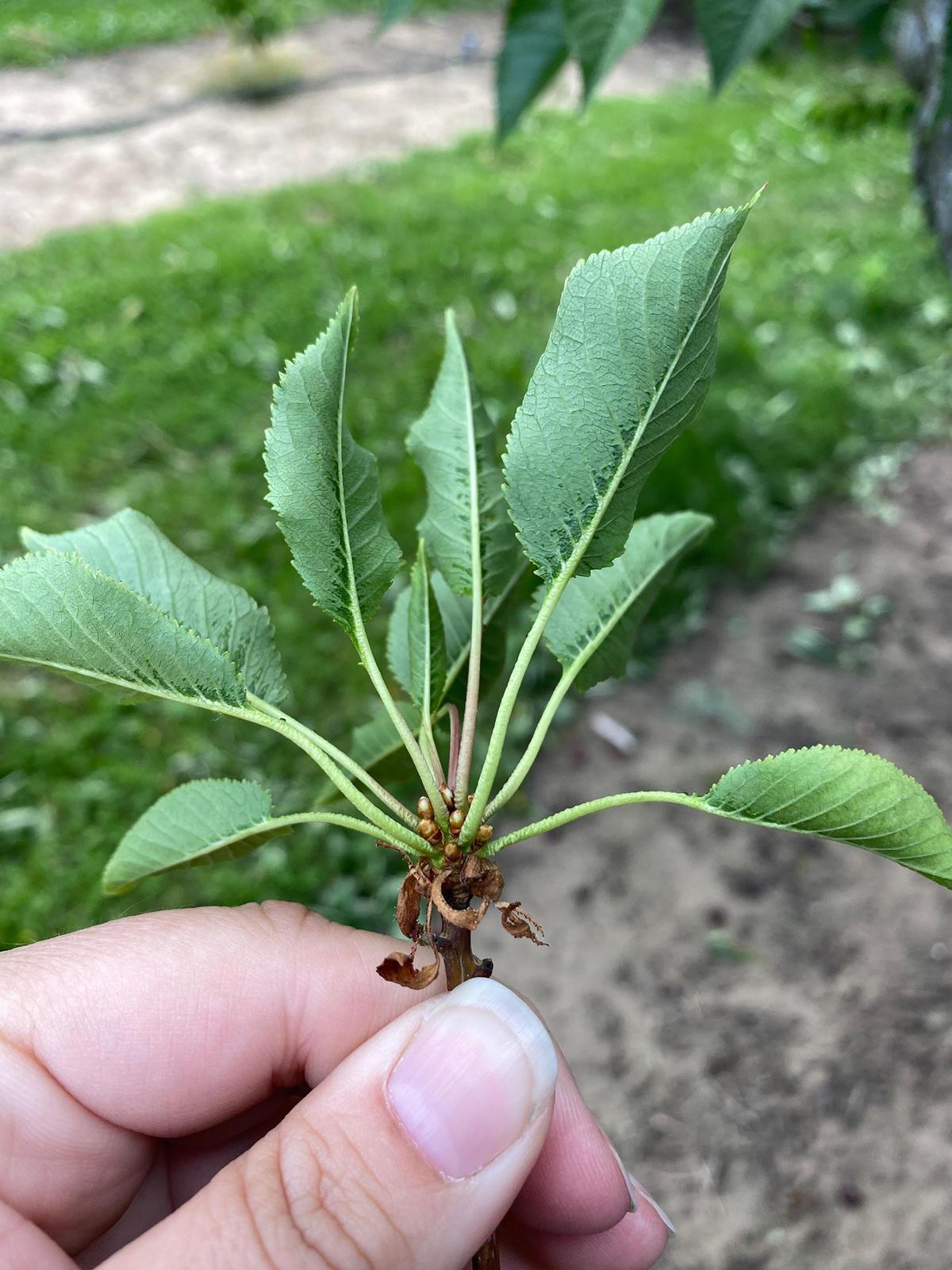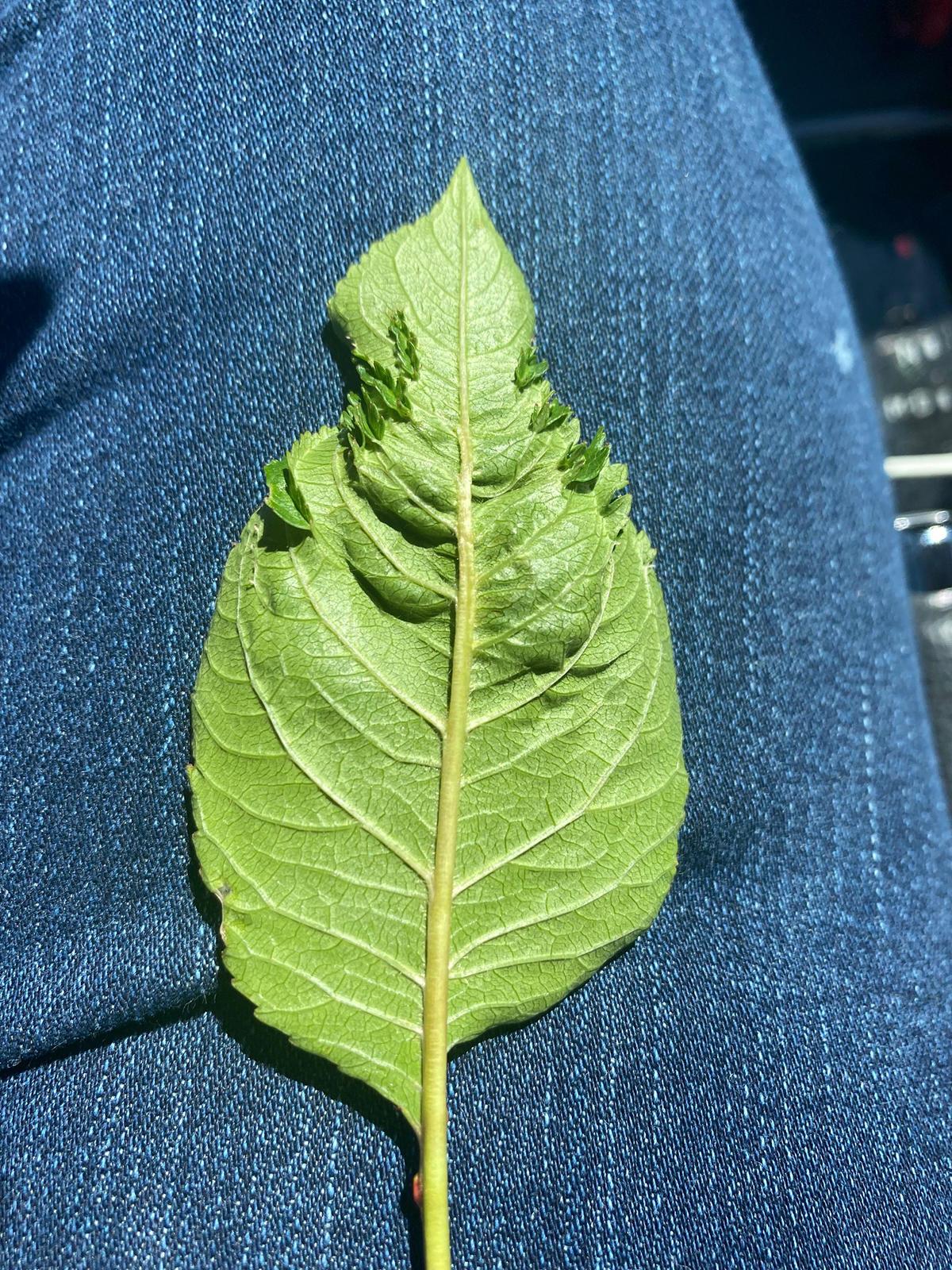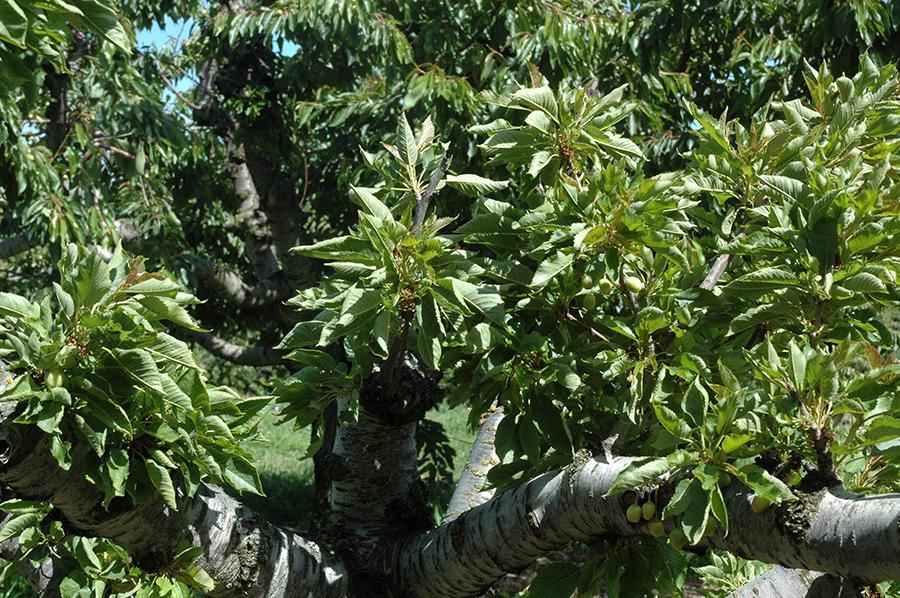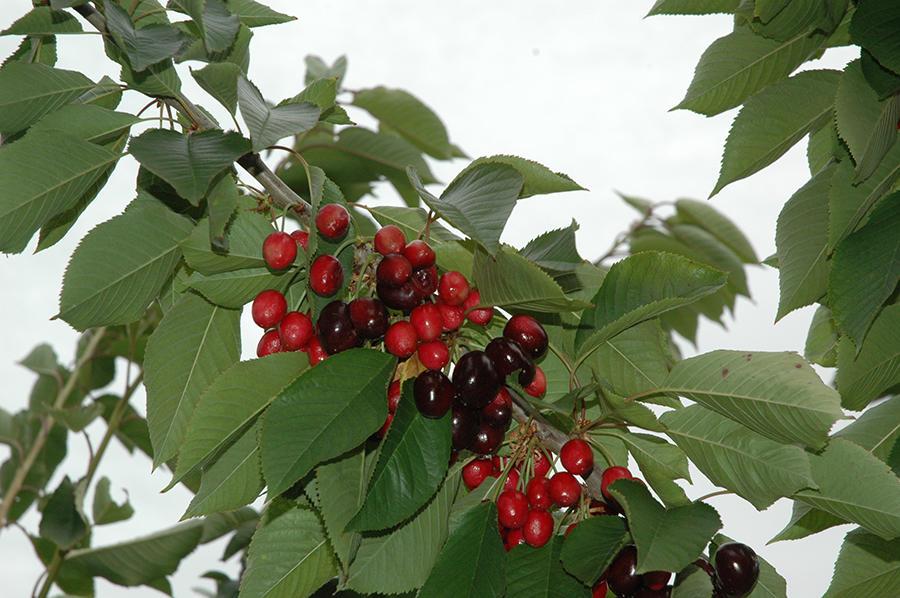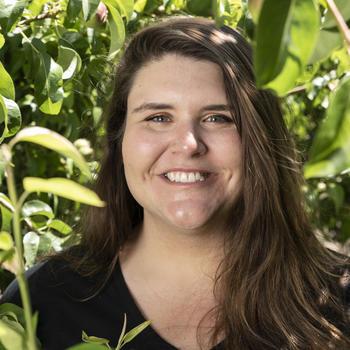Introduction
Cherry viruses and virus-like problems such as phytoplasmas are common in orchards throughout Oregon. They range from benign to lethal. The most serious viruses spread quickly throughout a growing region, significantly reducing fruit quality and yield. Serious viruses may eventually kill infected trees.
Although it is imperative that orchardists and field consultants identify and control serious viruses in their orchards, identifying them through symptoms is often difficult. Symptoms and severity depend on the cultivar, time of year and weather conditions.
To spot problems and develop a plan of action, focus on enations, rosetting and little cherries — symptoms of the most serious viruses and phytoplasmas in Oregon. Controlling these viruses and phytoplasmas is vital to the state’s cherry industry.
Symptoms
Enations are raised growths, called galls, that develop on the underside of the leaf, along the midrib or between the lateral veins. In some instances, the whole leaf is affected, but often enations are small and may require a hand lens to see. Typically, enations are a darker green than the leaf underside. Consequently, some describe enations as looking like the top of the leaf is popping out through the underside of the leaf. Enations may feel scaly or bumpy. The best time to observe enations is between bloom and harvest. (Figure 1)
Enations are symptoms of:
- Rasp leaf, caused by the cherry rasp leaf virus (CRLV)
- Rugose, caused by the rugose strain of Prunus necrotic ringspot virus
- Yellow bud mosaic strain of the tomato ringspot virus
- Virus-induced cherry decline, caused by the cherry leafroll virus
Rosetting is poor growth due to short internodes. Branches with rosetting will have small leaves that are close together. Sometimes this symptom is described as looking like a lion’s tail. Leaves may appear yellowed. The best time to observe rosetting is near harvest.
Rosetting alone may be due to low boron levels. But in combination with any other symptoms, rosetting indicates a viral infection is likely. (Figure 2)
Rosetting is a symptom of:
- Cherry mottle leaf, caused by the cherry mottle leaf virus
- Yellow bud mosaic, caused by the Tomato ringspot virus
- Virus-induced cherry decline, caused by the cherry leafroll virus
- Prune dwarf, caused by prune dwarf virus
- Prune dwarf virus and prunus necrotic ringspot virus coinfection
Little cherry symptoms are fruit that are small, pale-red to greenish-white and poorly flavored. In some instances, the fruit has pointed or flat sides. These poorly developed cherries are often interspersed among normal-looking fruit. Symptoms often start on one branch before progressing throughout the tree. Symptoms are most noticeable two weeks before harvest through harvest when normal-looking fruit is mature (Figure 3). Little cherry should not be confused with small cherries, which are small but ripen normally.
Little cherry is a symptom of little cherry disease, caused by little cherry virus -1 and -2 and X-disease (caused by Candidatus Phytoplasma pruni).
| | Symptoms | ||
|---|---|---|---|
| Disease | Enations | Rosetting | Little cherry |
| Cherry mottle leaf | x | ||
| Little cherry disease | x | ||
| Prune dwarf | x | ||
| Rasp leaf | x | ||
| Rugose | x | ||
| Virus-induced cherry decline | x | x | |
| Yellow bud mosaic | x | x | |
Confirming your diagnosis
Since many symptoms indicate several viruses or phytoplasmas, consider sending samples to a lab to confirm the diagnosis. Labs use molecular methods to identify the virus or phytoplasma causing the symptom.
For molecular diagnostics, collect four 5-inch cuttings, including leaves and fruit stems, from symptomatic branches at harvest time through mid-August. Do not collect samples when temperatures exceed 90° F; those samples can result in false negatives. Do not send old, dry leaves and stems, which are more likely to yield a false negative than fresh tissue. Try to sample early in the week if you are mailing your cuttings. Place the cuttings in a bag labeled with your orchard name and the cherry variety and rootstock. Keep your sample fresh by storing it in the refrigerator until you send it. Submit samples to the Oregon State University Plant Clinic lab using the appropriate form. Specify which diagnostic tests should be completed. Select a shipping or mailing option to deliver your samples within two or three days.
Management
Manage viruses at orchard establishment by planting only certified virus-free material. As your orchard matures, scout for virus and phytoplasma symptoms. If you identify a tree with these symptoms, look for nearby trees with similar symptoms. Virus-infected trees often occur in clusters.
Mineral nutrient deficiencies, herbicide damage or low temperatures may cause similar symptoms. Confirm with your field consultant or your Extension agent that symptoms are caused by viral infections.
Once you confirm an infection, remove infected trees. A “cut stump” herbicide treatment will prevent virus and phytoplasma transmission through root grafting. The “cut stump” method can help you identify and remove asymptomatic, root-grafted trees. For more information, see Getting Ahead of X-disease (EM 9362) in the OSU Extension Catalog. Cherry virus and phytoplasma infections cannot be cured, so removing infected trees is vital to reduce new orchard infections.
You can manage serious cherry viruses and phytoplasmas through orchard sanitation. Control weeds such as clovers, dandelions and curly dock, which can harbor viruses and phytoplasmas. Weeds are also an alternative habitat for insect vectors, such as leafhoppers and nematodes. Consider removing wild alternative virus hosts, such as choke cherry and wild cherry, within 500 feet of your orchard to reduce potential virus reservoirs. Choke cherry and wild cherry have not been identified as an infection source in the West but have been an X-disease source on the East Coast.
Manage insect vectors through sanitation and well-timed insecticide applications. Controlling insects as disease vectors is more complicated than controlling insects as pests. Relatively few insects can spread the virus or phytoplasma throughout your orchard. Thus, insect vector control should accompany infected tree removal and management of any potential reservoirs to reduce new virus and phytoplasma infections in your orchard.
Orchardists should contact field representatives and Extension professionals to develop a tree removal and replanting plan.
Additional resources
For more information about viruses and phytoplasmas that infect cherries:
- The Pacific Northwest Plant Disease Management Handbook
- Plant disease testing resources at Oregon State University
